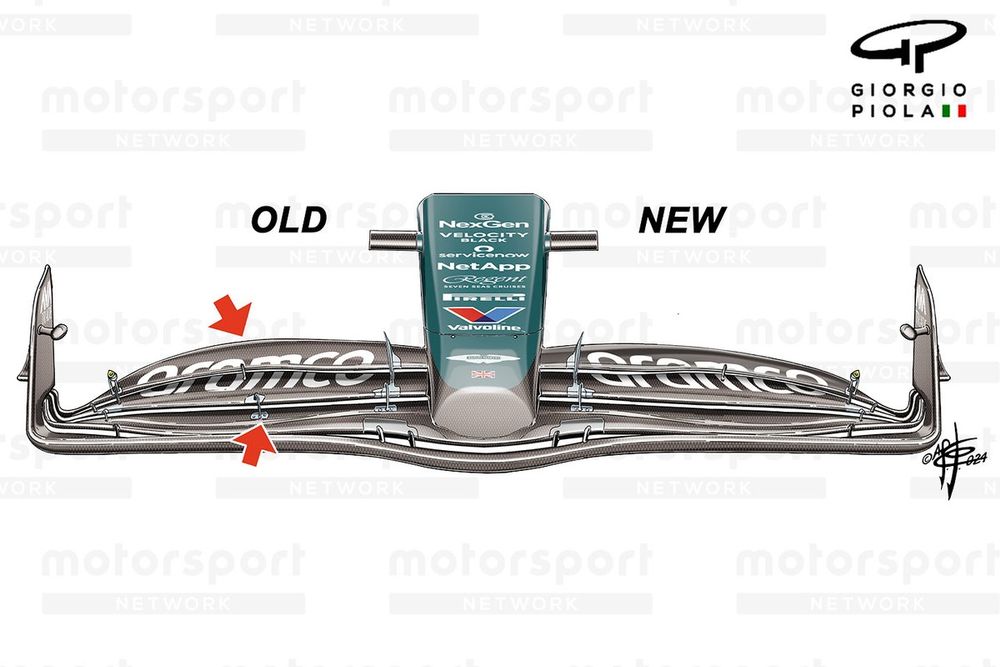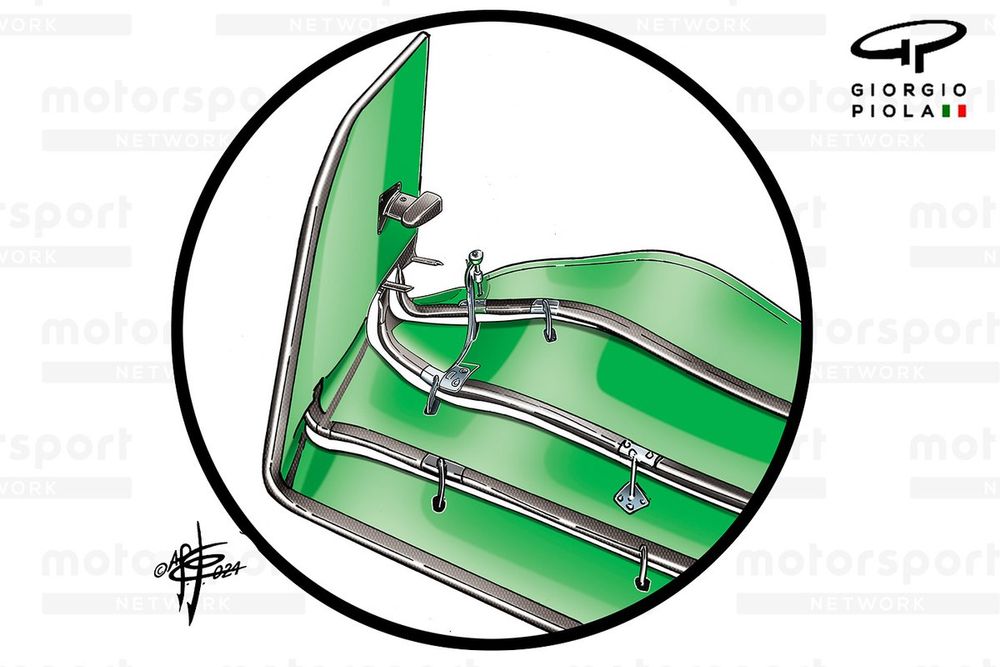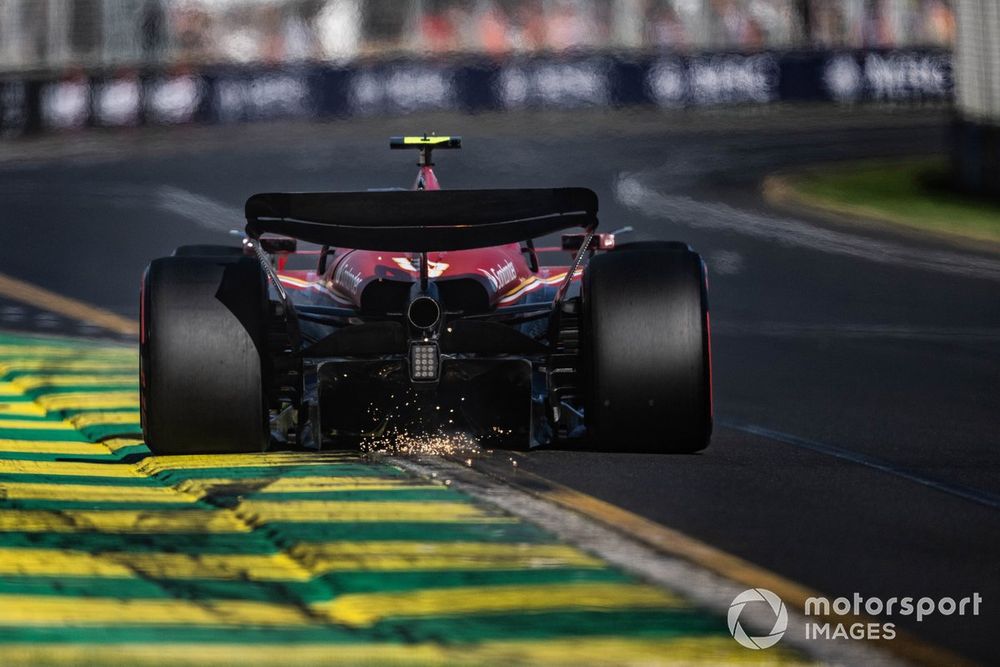Ferrari introduced a new but simplistic solution in Melbourne, as a winglet could be found mounted either side of the curved exhaust surround and rear wing pillar mounting on the SF-24.
It’s interesting that we haven’t seen anyone place winglets here before, given it’s clearly allowed within that box region and especially as Formula 1 designers have a penchant for placing aerodynamic surfaces wherever possible, with devices like the T-Wing a testament to this.
Despite this being the first time we’ve seen a winglet here, it’ll now likely be something we see other teams add to their arsenal during the course of the season, with these pylon winglets expected to help repurpose some of the heat being rejected from the engine cover outlet and improve flow downstream to the beam wing.
Carlos Sainz, Ferrari SF-24
Photo by: Simon Galloway / Motorsport Images
Notably, Ferrari also made the switch to just a single element beam wing configuration for qualifying and the race having initially prepared the SF-24 with its bi-plane style arrangement.
The team clearly felt that this lower downforce configuration better suited the demands of the Albert Park circuit, having trialled its other solution in practice on Friday. The rear wing remained in the same configuration it had during the course of the first two races, with the new, lower downforce configuration taken to Saudi Arabia still remaining unused and under wraps.

Aston Martin AMR24 front wing detail
Photo by: Giorgio Piola
Aston Martin introduced a new front wing configuration in Australia, with the spanwise twist distribution of the upper two flaps altered to improve the performance envelope of the wing and therefore the car as a whole.
As a consequence of the change in flap profile the team have also removed one of the metal support brackets in the centre of the lower of those two flaps.

Kick Sauber C44 front wing detail
Photo by: Giorgio Piola
Sauber also introduced a new front wing in Australia although this was more of extensive overhaul, as they made the switch to the semi-detached flap and endplate juncture that we’ve seen Mercedes utilise since the beginning of this regulatory phase.
The goal with this design, and in fact Sauber’s precursive solution, is to increase the amount of outwash that the outboard section of the wing generates while still having the desired capacity to generate the downforce required of the front wing.
This means…
Click Here to Read the Full Original Article at Autosport.com – Formula 1 – Stories…

